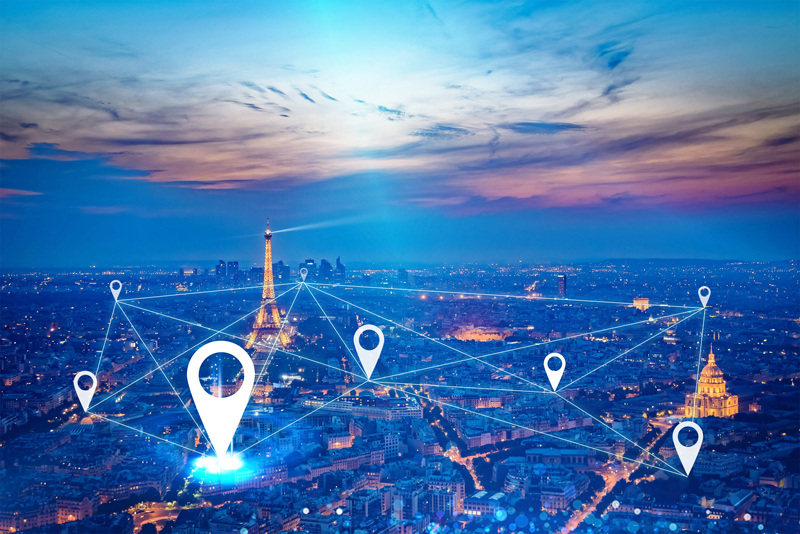Home >Technology peripherals >AI >The development of smart cities: the key role of multi-connected devices and artificial intelligence
The development of smart cities: the key role of multi-connected devices and artificial intelligence
- WBOYWBOYWBOYWBOYWBOYWBOYWBOYWBOYWBOYWBOYWBOYWBOYWBforward
- 2024-01-23 23:51:251361browse

With the rapid popularity of connected devices, the concept of smart cities is gradually becoming a reality. These technologically advanced urban centers are expected to improve the quality of life of residents and optimize the operational efficiency of city managers through complex networks of interconnected devices. Devices such as smart lighting, electric vehicle chargers and smart meters have huge potential to fundamentally change urban life. Through smart lighting systems, cities can achieve energy conservation and environmental protection while providing a safer and more comfortable living environment. The intelligence of electric vehicle chargers can provide convenient charging services to urban residents and promote the popularity of electric vehicles. The use of smart meters can achieve more accurate energy measurement, helping residents save energy and reduce energy consumption. The application of these technologies will bring huge opportunities to the construction of smart cities and
These networked devices provide many advantages to city managers. They enable better allocation of resources, conserve power, facilitate efficient maintenance plans, and provide valuable data insights on usage patterns to optimize city services and infrastructure. For example, the implementation of smart parking spaces can not only help drivers find available parking spaces, but also bring wider benefits, such as reducing fuel consumption, noise pollution and the risk of traffic accidents.
Developing high-reliability scalable networks in smart cities
In smart cities around the world, smart meters, electric vehicle chargers and smart lighting are three important components among the many innovations. In terms of communication technology, we can see a growing trend in the use of cellular LPWA (such as LTE-M and NB-IoT) connections, but the connectivity technology market is still very fragmented. In addition, there has been the adoption of multiple sub-GHz standard technologies, such as Wi-SUN, Wm-BUS, LoRa and proprietary technologies developed by other companies. The continuous development and application of these technologies promotes the further development of smart cities and provides people with a more intelligent, convenient and efficient lifestyle.
Like other technologies, these independent technologies may experience occasional communication glitches or interruptions due to:
Interference from other wireless devices or networks may be caused by Wi-Fi using the same frequency band Caused by networks, Bluetooth devices, and other devices operating in the same frequency range.
When node communication occurs outdoors and in large-scale environments, if the distance between nodes is too far or the signal strength is not enough, it may encounter obstacles such as buildings, trees, or natural terrain, resulting in Communication failure situation.
Obstacles: Physical obstacles such as buildings, walls, or large metal objects can block or reflect signals, causing communication failures.
Network congestion: High network traffic or congestion can cause delays in data transmission, affecting network connectivity and responsiveness.
To achieve high reliability and scalable networks, cities should consider deploying devices that support multiple protocol connections, such as cellular LPWA and sub-GHz protocol devices that can move between networks.
This hybrid deployment approach will simplify the development of smart cities. Such devices extend battery life, extend range and reduce connectivity costs.
The combination of cellular LPWA and Sub-GHz is also suitable for scenarios that include fallback connectivity options (e.g., driver fallback options) or have each device operate as a low-cost gateway.
For example, imagine a network area with many smart meters. If some meters are unable to communicate using the sub-GHz protocol due to the above reasons, the device will be able to automatically switch to a cellular LPWA connection and act as a gateway seamlessly.
For large-scale equipment, critical equipment and interoperable equipment, multi-protocol connectivity is the right choice.
Improving interoperability with artificial intelligence
Artificial intelligence integration is key to enhancing interoperability within smart cities and enabling seamless communication between different connected devices. By implementing AI-driven data standardization and interpretation, cities can enable efficient data exchange and gain valuable insights for optimizing operations.
AI-enabled predictive maintenance ensures proactive equipment management, reducing disruption and maintenance costs. In addition, AI-driven traffic management and adaptive energy distribution simplify transportation and energy systems and promote sustainable development.
The integration of artificial intelligence with existing IoT infrastructure paves the way for efficient, sustainable and innovative smart cities, benefiting both residents and the urban landscape.
Unleashing the Potential of Smart Cities
As smart cities continue to evolve, prioritizing interoperability and adopting mesh networks is critical to unlocking the true potential of connected devices. By creating an ecosystem where devices can communicate harmoniously, city administrators can leverage real-time data insights to optimize city infrastructure, improve resource management, and ultimately create smarter, more sustainable and livable cities that benefit all residents.
The above is the detailed content of The development of smart cities: the key role of multi-connected devices and artificial intelligence. For more information, please follow other related articles on the PHP Chinese website!

